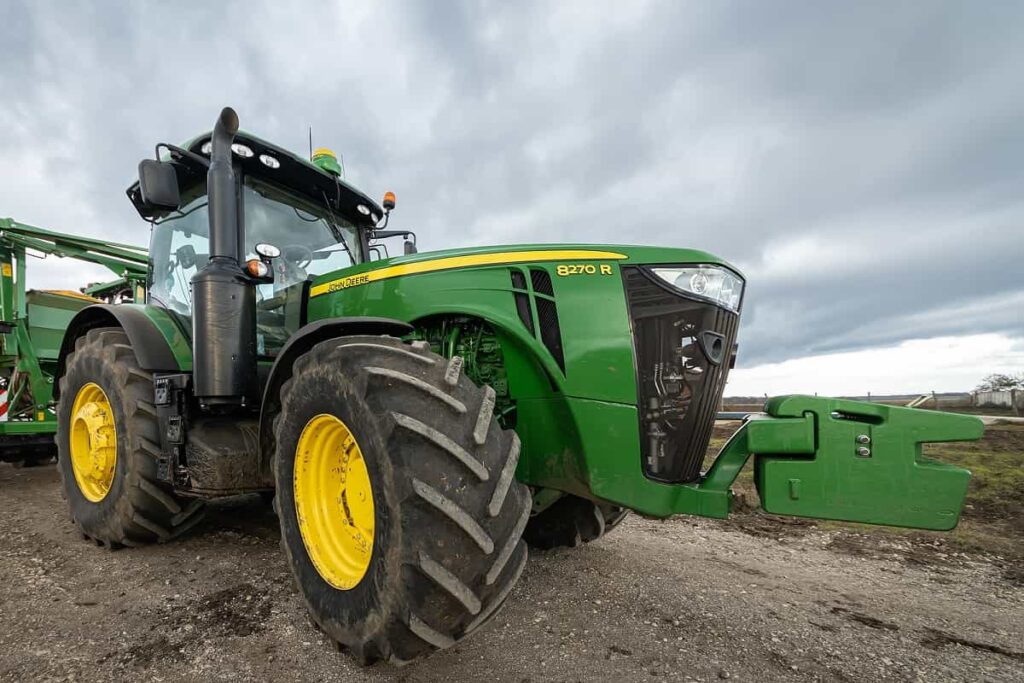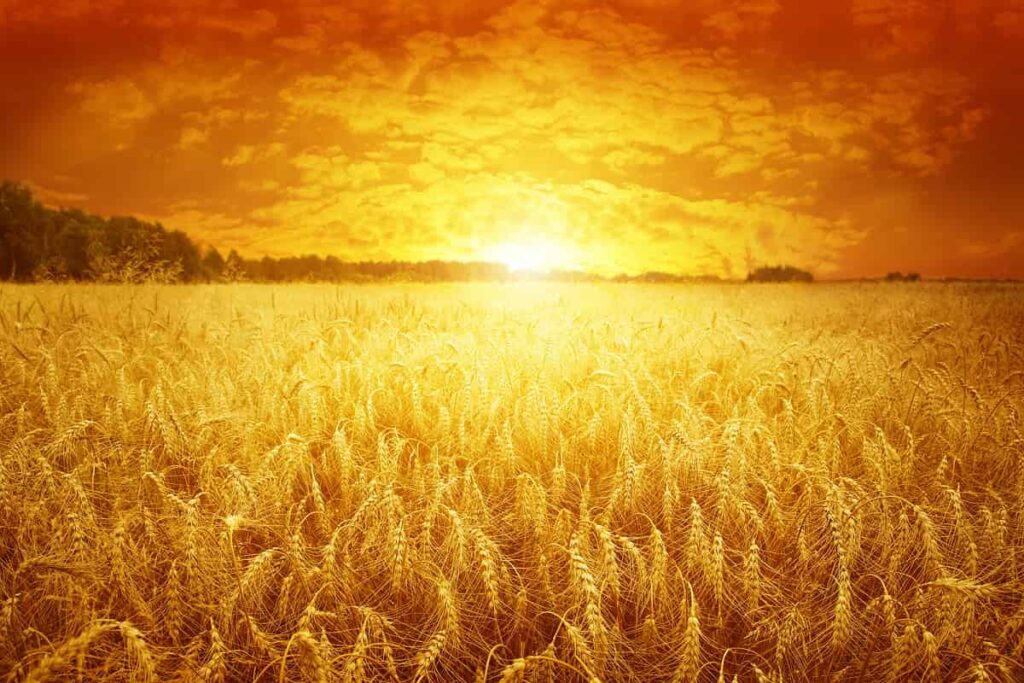How Fruit Packing Warehouses Use Technology
Table of contents

Walk into any grocery store in America and you’ll find a variety of fresh apples for consumption. It’s remarkable to think how developed markets have managed to secure the availability of apples year-round. That miracle is made possible through lots of behind-the-scenes work that takes place at packing houses to ensure only the best fruit makes its way to grocery store produce sections. Take Washington State for example, where 58% of the apples grown in the United States are produced at a value of $2.5 billion yearly. Somewhere around 100 packing warehouses across the state work almost year-round to provide apples for domestic consumption with 30% of the product getting exported across the globe.

After the fruit is grown and picked, there’s an intermediate step which most consumers know little about – packing – where the fruit is prepared for sale. We recently traveled to the small town of Bingen, Washington to spend some time learning about how the sausage gets made.
Mount Adams Fruit
On the shores of the beautiful Columbia River is a brand-new warehouse that belongs to Mount Adams Fruit, a family-owned fruit production company that has been in operation for more than 100 years. Exactly two years ago today, a catastrophic fire totally destroyed their operation leading to a rebuild that was led by someone who understood the importance of technology in operations. We sat down to talk with Vice President at Mt. Adams Orchards, Doug Gibson, whose background in technology last saw him working as a Senior Director of Product Management at IBM. Over the past three years, he’s managed to transform the Bingen fruit packing warehouse into a lean operation that now relies entirely on technology.

The process all starts with finding some fruit that needs packing. The inventory sourced by Mount Adams fruit is about an even mix between independent producers and fruit the company grows itself. All of the processed fruit gets sold at various price points depending on many factors with the busy season falling between Mid-August through May. Fruits processed include apples and pears with the latter being more of a challenge due to the pear’s oblong shape. Once the fruit arrives in large bins on a semi-truck, forklifts unload it and the processing operation commences.
From Farm to Warehouse
The first step is to sort the fruit which isn’t just a matter of throwing out all the undesirables into a “juicing” bin. This is where machines from Holland’s Greefa – a world market leader in sorting technology – are used to sort and grade the fruit using artificial intelligence algorithms that can identify all kinds of defects and blemishes.

Greefa has a team of more than 40 developers that are refining these sorting algorithms, one of whom was on hand working to refine the algorithms which can identify dozens of root causes for imperfections that don’t affect taste at all but the American consumer doesn’t want to see. Called iQS Performance, the vision system captures an enormous number of HD images and analyzes every single irregularity in real-time, on the skin, and even in the area slightly under the skin as big as 1mm². The fruit is then placed into boxes by humans – a process that remains manual for pears because of their oblong shape – while a final quality check removes any last undesirables.
From Boxes to Pallets
Once the fruit is boxed, the big robots take over. A New Zealand firm called JMP (also operating under the brand name Icon Robotics) has built the software needed to power six Kawasaki robots that are tasked with loading pallets. Don’t let their 1990s-themed web presence fool you. JMP is the vendor of choice for this task, given that they’ve integrated more Kawasaki palletizing robots than any other company in the world.

Kawasaki robots boast the highest reliability in the industry at 100,000 hours mean time between failure (MTBF) while requiring very little maintenance.
The robot’s job is to take the boxes of fruit and stack them onto pallets based on SKU, with each robot handling 8 SKUs worth of fruit types. As the boxes come down the line, the robots place them carefully onto pallets with speeds that can reach 50 cartons a minute.

When a pallet is full, it’s released down a conveyor belt where customizations to the pallet are made based on customer orders already in their customer relationship management (CRM) system, Salesforce. The final step slaps a label on the pallet and tells Salesforce that the inventory is now available. The pallet then traverses across the room and enters the cold storage area.
Cold Storage at Scale
A company called Advanced Storage Products built out the impressive cold storage room which is seven stories tall and fully automated. It’s all made possible by Rover, a shuttle-based Automated Storage and Retrieval System (AS/RS) that creates 15 – 20% more storage capacity than your bog-standard selective rack warehouse. With multiple Rovers running about, you’ll never have to worry about downtime because there’s no single point of failure. A single Rover can travel throughout the racking structure to any pallet storage location or infeed/outfeed station.

Advanced software manages the system’s fleet of Rovers to efficiently transport pallets in and out of the system automatically. When trucks arrive to take fruit orders, the system automatically moves each load to the loading dock so the right order always gets filled. Pears can last a long time in cold storage as they’re not ripe yet. If you want to order ripe pears, Mount Adams fruit is in the process of putting together a one-of-a-kind pear ripening environment that can ripen four truckloads of pears in only a few days. It’s just another value-add that can command a price premium.
The Benefits of Automation
Using automation to perform tasks in highly regulated industries has obvious benefits from a liability standpoint. A robot won’t develop back problems then sue you because there were insufficient safety warnings on the shop floor about the dangers of lifting heavy boxes. Removing human error improves quality, and the use of automation and sensors leads to a digital twin that you can optimize to dramatically improve volume and margins. But not all automation is good automation. Mr. Gibson was quick to point out areas where automation was available but wouldn’t realize the sort of return on investment needed to justify the cost.
The new Mount Adams Fruit operation will result in 30-40% more fruit processing capacity every season. As for labor cost savings, Mount Adams didn’t have a large enough labor pool to begin with, so they’ve had to increase salaries to fill more jobs. More fruit flowing through the warehouse means more jobs, no matter how much automation you bring in. New jobs are created as well. We met one of their data analysts who was using Tableau to mine their data and create price heatmaps of product sales across time. This all ties into the backbone of the operation, Salesforce, which is also used by an external sales team to sell the fruit with Einstein predicting packouts and sales trends. Then, there’s the most important part of the value chain – the growers.
Growing Profits and Yield
In order to learn more about growing fruit, we sat down to talk with Richard Rust of Rust Orchards who’s been growing fruit for many decades under the shadow of beautiful Mount Adams. He went from a prior stint as superintendent at the flagship 600-acre Mount Adams Fruit orchard to running his own operation and knows all the pain points for commercial and independent growers. One problem for a grower is having very little leverage. Every year, growers produce a perishable product with varying degrees of quality that needs to be sold by a particular date. Margins are tight, crops are variable, and increased regulation puts pressure on margins. An automated packing warehouse can result in some benefits upstream such as feedback on crop quality and yield.
For growers, all the fruit goes into a single “pool.” Once all the fruit gets sold, growers will know what they get as the total gets divvied up. Mr. Rust estimates that roughly half the pear’s value goes back to grower along with a report that itemizes all the pears that were processed along with the associated fees. There’s also a “cull report” that tells the grower what pears couldn’t be used and why. This used to be manually produced by sampling 100 pears off the cull line, but will soon be automated using machine learning so that every bad pear gets counted and accounted for. A more accurate look at what defects were observed in each crop helps growers identify problems and address them.
Another benefit of the automated fruit packing process is that crops with lower quality can still be processed so that some money can be returned to the grower. A good example would be cherries, a fruit which needs to be picked with stems on because that’s what the picky consumer demands. If your cherry crop has significant water damage, human cherry sorters wouldn’t be able to get the fruit clean enough to meet a predetermined Federal quality grade. On the other hand, machines can easily sort any volume of fruit with any percentage of defects. This way the grower might be able to at least recoup their costs when disaster strikes as it often does.
Additional benefits will be realized as all this big data flows throughout the supply chain. Data analysts at Mount Adams Fruit are extracting data from the company’s old AS/400 and plugging it into data visualization tools like Tableau to gain insights. For example, historical yield data combined with weather data might identify some useful insights. Since Mount Adams Fruit grows their own inventory, they’re looking to improve their predictive analytics by injecting more big data into the system from their growing efforts. For example, they’re counting the buds after pruning in order to better predict yield and feeding these forecasts into Salesforce. It’s a topic we touched on recently in our article on using predictive analytics to better predict yield.
Conclusion
With the planet’s population increasing rapidly alongside discretionary income, the demand for perfect-looking fruit will only increase. By utilizing predictive analytics and identifying the root causes for bad fruit, food waste can be minimized and the amount of usable product can be maximized. We’ve looked before at agtech startups addressing various aspects of farming fruit – from precision agriculture to robot fruit pickers, technology is being used across the entire supply chain to create value. The automated fruit packing warehouse of the future will be continuously improving, as each season brings a new set of delicious big data which the machine learning algorithms will use to become even better at what they do.
Sign up to our newsletter to get more of our great research delivered straight to your inbox!
Nanalyze Weekly includes useful insights written by our team of underpaid MBAs, research on new disruptive technology stocks flying under the radar, and summaries of our recent research. Always 100% free.















In my experience, it is the retailer that demands the blemish-free, perfectly uniform apple and every cherry with a stem, not the consumer.
In all the talk about tireless, defect-free, never complaining robots, let’s remember that producing fruit is also about people in fruit-growing communities who need good jobs to pay for their lives and raise healthy kids. Let’s rein in our excitement about relentless automation.
Thank you for the comment Graem. Perhaps it is the retailer who has created the expectation that all fruit needs to look like something of the cover of Better Homes and Gardens, that every cherry needs a stem or it doesn’t taste right. That’s what the consumer has become accustomed to seeing so it’s now become an expectation.
Fruit IS all about fruit-growing communities, and we spent a lot of time checking out the operations – growing, picking, sorting, and packing – which are largely staffed by the Mexican community – as in the majority of all workers from tending the orchard to when the semi drives away from the packing warehouse. When the Mexicans don’t come around to pick the fruit, good luck finding anyone else who will. (One grower we spoke with went down to skid row one time with a bus to “recruit” fruit pickers when there was a shortage. It’s tough to find people who want to pick fruit.)
The warehouse we spoke with had a difficult time with staffing and the robots helped fill that need. That’s not to say there isn’t a concern about automation displacing jobs. That’s a huge concern, more so in the area of those truckers driving semis full of fruit around. That’s a $700 billion industry that will be disrupted when autonomous trucking arrives – millions of jobs. That’s a huge problem.